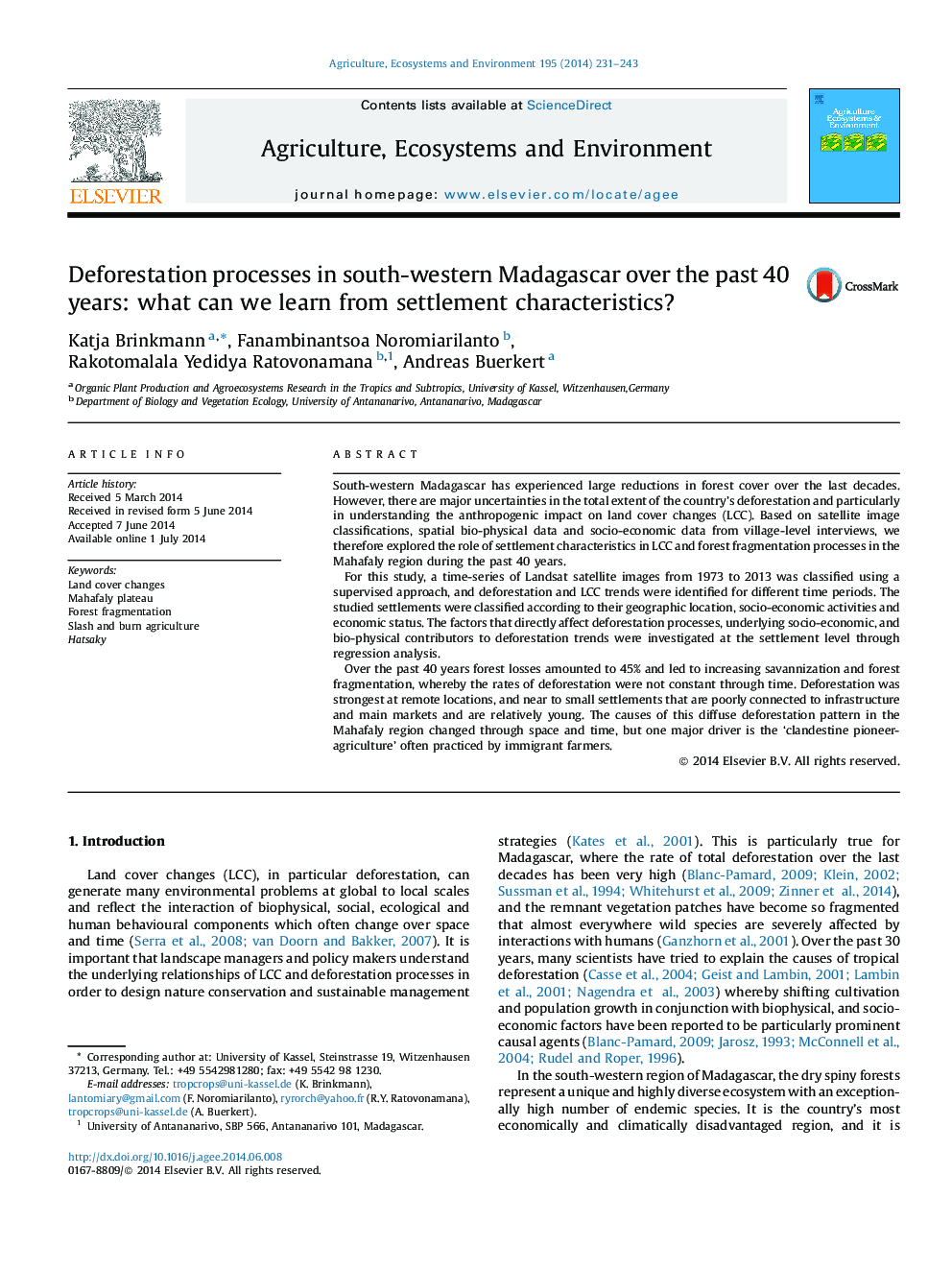| کد مقاله | کد نشریه | سال انتشار | مقاله انگلیسی | نسخه تمام متن |
|---|---|---|---|---|
| 2413926 | 1552057 | 2014 | 13 صفحه PDF | دانلود رایگان |
• Satellite images and socio-economic data was used to analyse deforestation processes.
• From 1973 to 2013 woodland losses amounted to 45%.
• Largest increase in deforestation was found at remote places.
• One major driver of deforestation was the ‘clandestine pioneer-agriculture’ around temporary residences.
• Remaining forests were mainly sacred places and other protected areas.
South-western Madagascar has experienced large reductions in forest cover over the last decades. However, there are major uncertainties in the total extent of the country’s deforestation and particularly in understanding the anthropogenic impact on land cover changes (LCC). Based on satellite image classifications, spatial bio-physical data and socio-economic data from village-level interviews, we therefore explored the role of settlement characteristics in LCC and forest fragmentation processes in the Mahafaly region during the past 40 years.For this study, a time-series of Landsat satellite images from 1973 to 2013 was classified using a supervised approach, and deforestation and LCC trends were identified for different time periods. The studied settlements were classified according to their geographic location, socio-economic activities and economic status. The factors that directly affect deforestation processes, underlying socio-economic, and bio-physical contributors to deforestation trends were investigated at the settlement level through regression analysis.Over the past 40 years forest losses amounted to 45% and led to increasing savannization and forest fragmentation, whereby the rates of deforestation were not constant through time. Deforestation was strongest at remote locations, and near to small settlements that are poorly connected to infrastructure and main markets and are relatively young. The causes of this diffuse deforestation pattern in the Mahafaly region changed through space and time, but one major driver is the ‘clandestine pioneer-agriculture’ often practiced by immigrant farmers.
Journal: Agriculture, Ecosystems & Environment - Volume 195, 1 October 2014, Pages 231–243
